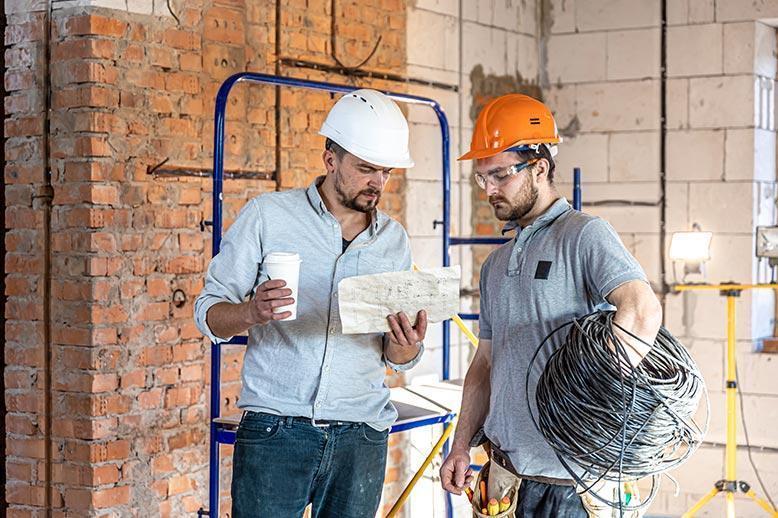A commercial electrical installation is a critical process that ensures the safety, efficiency, and functionality of an establishment’s electrical system. Whether you are constructing a new commercial building, renovating an existing one, or upgrading the electrical infrastructure, understanding what to expect during the installation process is essential. This guide will walk you through the key phases, potential challenges, and important considerations to help you navigate the project with confidence.

1. Planning and Design Phase
Before any installation work begins, a thorough planning and design process takes place. This stage involves collaboration between business owners, architects, electrical engineers, and contractors to create a blueprint that meets local electrical codes and business needs. Key aspects of this phase include:
- Assessment of Power Needs: Determining the amount of electrical power required for the business operations.
- Blueprint Development: Designing an electrical layout that includes wiring diagrams, panel locations, and outlet placements.
- Compliance with Regulations: Ensuring the plan adheres to national and local building codes and safety standards.
- Budgeting and Scheduling: Establishing cost estimates and timelines for project completion.
2. Obtaining Permits and Approvals
Once the planning phase is complete, the next step is to obtain the necessary permits and approvals from local authorities. This phase may take time, depending on the complexity of the project and the jurisdiction’s approval process.
3. Site Preparation and Safety Measures
Before starting the physical installation, the worksite must be prepared to ensure a safe and efficient workflow. Site preparation includes:
- Clearing the Area: Removing obstacles and preparing the space for electrical work.
- Setting Up Safety Protocols: Implementing safety measures such as lockout/tagout (LOTO) procedures, protective gear, and fire safety equipment.
- Inspecting Existing Systems: If it is an upgrade or renovation, assessing the current electrical system to identify any potential hazards.
4. Installation of Electrical Components
The actual installation phase involves several critical steps, including:
- Wiring Installation: Running electrical wiring throughout the building based on the blueprint.
- Panel and Circuit Breaker Installation: Setting up electrical panels and circuit breakers to regulate power distribution.
- Lighting System Setup: Installing commercial lighting fixtures, including overhead lights, emergency lighting, and exterior lighting.
- Outlet and Switch Placement: Ensuring proper placement of electrical outlets, switches, and power points.
- HVAC and Equipment Wiring: Connecting power to essential equipment such as heating, ventilation, air conditioning (HVAC) units, and specialized business machinery.
5. Testing and Inspection
Once the installation is complete, testing and inspections are performed to verify that the electrical system is functioning correctly and safely. This includes:
- Voltage and Load Testing: Ensuring the system can handle the expected electrical load without overloading.
- Grounding System Checks: Verifying that grounding systems are in place to prevent electrical hazards.
- Compliance Inspection: Having an authorized inspector review the installation to confirm it meets regulatory standards.
- Identifying and Fixing Issues: Addressing any issues discovered during testing before full system activation.
6. Final Approval and Commissioning
After passing inspections and meeting all safety requirements, the system receives final approval. The electrical contractor will then commission the system, ensuring all components operate as intended. This may involve:
- Providing Documentation: Supplying as-built drawings, maintenance manuals, and warranties.
- Training Staff: Educating employees on basic electrical safety and operation of installed systems.
- Handover to Facility Management: Officially transferring responsibility to the building owner or facility management team.
7. Ongoing Maintenance and Future Upgrades
A commercial electrical system requires regular maintenance to ensure longevity and prevent potential failures. Business owners should establish a maintenance plan that includes:
- Periodic Inspections: Scheduling routine electrical inspections to identify wear and tear.
- Upgrading Systems: Keeping the system updated with energy-efficient technology and compliance with evolving codes.
- Emergency Repairs: Having a plan in place for addressing unexpected electrical issues.
Common Challenges in Commercial Electrical Installations
While a well-planned installation should proceed smoothly, certain challenges can arise, such as:
- Unforeseen Structural Issues: Older buildings may require additional modifications to accommodate new wiring.
- Supply Chain Delays: Obtaining electrical components may take longer due to supply shortages.
- Budget Constraints: Unexpected costs can arise, requiring budget adjustments.
- Regulatory Changes: Compliance requirements may change, necessitating design modifications.
Conclusion
Understanding what to expect during a commercial electrical installation helps businesses plan effectively and minimize disruptions. From initial design to final commissioning, every phase plays a crucial role in ensuring a safe and efficient electrical system. Working with experienced professionals, staying informed about regulations, and implementing regular maintenance will contribute to the long-term success of your commercial electrical infrastructure. For professional commercial electrical installation services, contact us today! Our expert team ensures safe, efficient, and code-compliant solutions tailored to your business needs.






